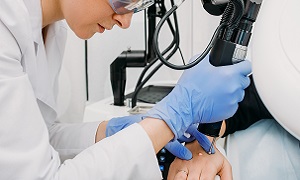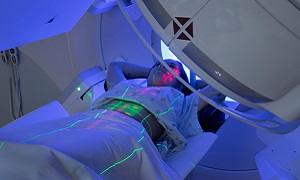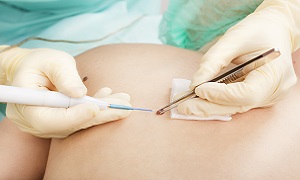Best Skin / Soft tissues cancer Doctors in india
Best Skin Cancer Treatment Hospitals in India
CK Birla Hospital, Gurugram
- City: Gurugram, India
Hospital Highlights:
- The CK Birla Hospital in Gurugram is a NABH-accredited multi-specialty hospital.
- The hospital strives to increase the quality of healthcare by focusing on UK NHS nurse and midwife training requirements. Policies and practices derived from the National Institute for Health and Treatment Excellence (NICE) recommendations in the United Kingdom ensuring that a strong focus on safety, high-quality clinical care, and sanitation is maintained.
- The hospital’s cutting-edge technology and facilities allow for real-time communication and seamless collaboration among caregivers, ensuring accuracy and the best possible results. Those with foreign experience and accreditations make up part of the hospital’s team of clinicians.
KIMS Hospital, Hyderabad
- City: Hyderabad, India
Hospital Highlights:
- KIMS Hospital (a brand name of Krishna Institute of Medical Sciences) is one of the largest and best multi-speciality hospitals in Hyderabad. The hospital provides various treatments to an enormous number of patients.
- The hospital has a capacity of more than 3000 beds. KIMS Hospitals offers different healthcare services in more than 25 specialities and super specialities.
- The hospital is equipped with modern medical equipment and technology. It has robotic equipment to provide minimal invasive techniques for patients.
- The hospital is aimed at providing world-class healthcare facilities and services at an affordable cost for patients.
- The various specialities and departments of the hospital include neurosciences, gastroenterology & hepatology, robotic science, reproductive sciences, dental science, oncological sciences, organ transplantation, heart and lung transplantation and mother and child care.
Fortis Hospital, Shalimar Bagh
- City: New Delhi, India
Hospital Highlights:
- Fortis Hospital in Shalimar Bagh is a multi-super specialty hospital that strives to provide world-class patient care by leaving no stone unturned.
- Fortis, Shalimar Bagh, with 262 beds and a 7.34-acre footprint, provides the best level of medical care through its team of doctors, nurses, technicians, and management professionals.
Reliance Hospital, Mumbai
- City: Mumbai, India
Hospital Highlights:
- Reliance Hospital is one of the best super-specialty care hospitals in Navi Mumbai.
- The main purpose of this hospital is to become a trustworthy place for the best health and hope for society. The hospital is well connected to the suburbs of Mumbai and Navi Mumbai.
- The hospital has various specialty departments, viz., Accident & Emergency, Anesthesiology, Dental Services, Dermatology, Diabetology, Dietetics Nutrition, Endocrinology, ENT, Gastroenterology, General Surgery, Gynaecology And Obstetrics, Hepato Pancreato Biliary Surgery, Infectious Disease, Internal Medicine, Interventional Radiology, Laboratory Medicine, Minimal Access Laparoscopic Surgery, Nephrology, Neurosciences, Opthalmology, Orthopaedics, Paediatrics, Pain Management Palliative Care, Physical Medicine Rehabilitation, Plastic And Reconstructive Surgery, Psychiatry, Pulmonary Medicine, Radiology, Rheumatology, Transplant, Urology Andrology, Vascular Surgery
Lilavati Hospital & Research Centre, Mumbai
- City: Mumbai, India
Hospital Highlights:
- Lilavati Hospital & Research Centre is India’s premier multi-speciality tertiary care hospital and has been recognised as a global medical excellence centre.
- Lilavati Hospital & Research Centre has built an unrivalled level of trust with its patients over the years, thanks to a solid foundation that comprises cutting-edge facilities, the best medical competence, research, education, and charity endeavours.
- The hospital is quite proud of the fact that it now serves patients from all kinds of backgrounds, not just from the United States but from all around the world.
- The hospital has a total of 323 beds, one of the largest Intensive Care Units (ICUs), 12 Operation Theatres with modern amenities, over 300 consultants, and almost 1,800 personnel.
MGM Healthcare, Chennai
- City: Chennai, India
Hospital Highlights:
- Located in Chennai, India, MGM Healthcare is a top multispecialty hospital that provides all medical services under one roof.
- Since its founding in 2019, MGM Healthcare has quickly become a leading national referral centre, creating several innovative flagship initiatives.
- MGM Healthcare combines next-generation medical and digital technologies to provide better patient results.
- With 12 centres of excellence, more than 400 inpatient beds, 100 intensive care unit beds, and 24/7 emergency care, MGM Healthcare leaves no chance in redefining the patient experience in Chennai.
- MGM Healthcare boasts 250+ expert doctors across 30+ departments, including Cardiology, Pulmonology, Neurology, Obstetrics & Gynaecology, and more.
- They house 12 specialized Centres of Excellence, including Neurosciences, Orthopaedics, and Multi-Organ Transplantation.
- Their team of doctors, nurses, and paramedics works together to give every patient individualized treatment.
Skin Cancer
Skin cancer is the abnormal growth of skin cells that develops on the exposed skin. These areas are the face, arms, chest and hands. However, this can also affect the areas of skin that get less exposure to the sun’s rays. These areas are lips, scalp, neck, the bottom of the feet, ears, genitals and under your fingernails or toenails. Skin cancer starts to appear as freckles, moles or spots on skin.
Types of Skin Cancer
The various types of skin cancer are as under:
- Melanoma – It is the most serious skin cancer. It develops in the melanin-producing cells called melanocytes. Melanin is a pigment responsible for giving color to your skin. This type of cancer mostly occurs in the eyes and sometimes in other body parts like throat or nose.
- Non-melanoma skin cancer – It refers to all the types of skin cancer that are non-melanotic. The treatment of this cancer depends on the type of cancer, whether basal cell carcinoma or squamous cell carcinoma. These two types of cancer fall under the broader category of non-melanoma skin cancer.
- Basal cell carcinoma – It is another type of skin cancer that begins in the basal cells. Basal cells are the type of cells present in the skin that produce new skin cells when the old cells die. This type of cancer appears as a transparent bump on the skin. However, it may take other forms. It occurs in the areas with the greatest exposure to the sun’s rays like head and neck.
- Squamous cell carcinoma of the skin – Squamous cell carcinoma is a more common type of skin cancer. It develops in the squamous cells responsible for making the middle and outer layers of the skin. The cancer is of an aggressive nature but is not life-threatening. If left untreated, cancer may spread to other parts of the body and grow in size causing serious complications.
Causes of Skin Cancer
When mutations or errors occur in the DNA of the skin cells, then it may cause skin cancer. The cells grow out of control due to these mutations and they form a mass. There are myriad types of cells involved in skin cancer. The top layer of the skin is the epidermis. The epidermis is a thin layer providing a protective coat of skin cells that continuously shed from your body. It has three types of cells in it.
- Squamous cells- They are present immediately below the outer surface. They act as the inner lining of the skin.
- Basal cells- They lie below the squamous cells. They produce new skin cells.
- Melanocytes- These cells produce melanin, which is a pigment that provides normal color to the skin. The cells are present in the lower part of the epidermis. Melanocytes protect the deeper layers of skin by producing more melanin when your body experiences more exposure to the sun’s rays.
Other causes
UV (ultraviolet) radiation found in sunlight and light used in tanning beds causes much damage to the DNA in the skin cells. There are other factors too, that contribute to the risk of skin cancer. These factors may be conditions that weaken the immune system or exposure to toxic substances.
Symptoms of Skin Cancer
Origin of cancer – Cancer occurs in the areas of skin with sun exposure like the scalp, ears, chest, face, neck, lips, hands & arms. It may also occur on the legs in women. Sometimes, it occurs on palms, under your toenails or fingernails and in the genital region.
Symptoms of Basal Cell Carcinoma – It mostly occurs on the neck or face of your body. Cancer appears as a waxy or pearly bump. It may also appear as a brown scar-like or flesh-colored lesion or as a scabbing or bleeding sore that returns on healing.
Symptoms of Squamous Cell Carcinoma – It appears on ears, face and hands. People with dark skin are at a greater risk of developing squamous cell carcinoma. It looks like a red, firm nodule. It may appear as a flat lesion with a crusted, scaly surface.
Symptoms of Melanoma – Melanoma may develop on an existing mole of your body that becomes cancerous or on the normal skin. It occurs on the face or even on the trunk of the affected men. Melanoma usually develop on the lower legs in women. Melanoma affects the area of the skin with minimum exposure to the sun in both men and women. It appears on the palms and soles of the people with dark skin tones. The signs of melanoma are:
- A mole that bleeds or changes in size, color and feel.
- A painful lesion that burns or is itchy.
- A large brownish spot with dark freckles.
- Dark lesions on the fingertips or toes, palms, soles, the lining of mouth, nose, anus or vagina.
- A lesion that appears red, white, pink, blue or blue-black with an irregular border.
Diagnosis of Skin Cancer
Skin Examination
Skin Biopsy
Treatment options for Skin Cancer
The treatment options for precancerous skin lesions and skin cancer vary. It depends on the type, size, location and depth of the lesions.
Freezing

Excisional surgery
Radiation therapy











